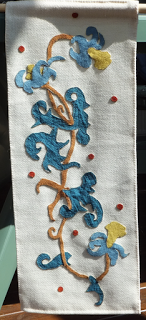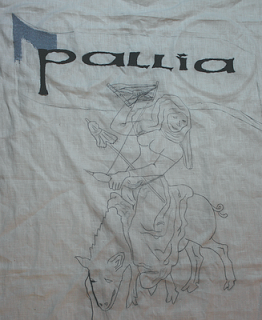I'm at the Textile Forum this week, and thus there will be no blogging. Since I will be away from home for a few more days after that, blog as normal will resume on September 25.
Meanwhile:
The Textile Forum is from today to Sunday, September 16; the programme is here. Day passes are available, so please drop by to meet other textile persons!
On the weekend after that, there's the official opening of LEA, where I will be showing wool preparation and spinning techniques.
There are still some places left for the embroidery workshop in Erlangen on the 27th of October and the 28th of October 2012. Here's the link for more information and booking.
And finally, Maney Publishing offers free access to its Journal of the Month, the European Journal of Archaeology, until October 15. All articles from the last three years are available.
Enjoy!
Meanwhile:
The Textile Forum is from today to Sunday, September 16; the programme is here. Day passes are available, so please drop by to meet other textile persons!
On the weekend after that, there's the official opening of LEA, where I will be showing wool preparation and spinning techniques.
There are still some places left for the embroidery workshop in Erlangen on the 27th of October and the 28th of October 2012. Here's the link for more information and booking.
And finally, Maney Publishing offers free access to its Journal of the Month, the European Journal of Archaeology, until October 15. All articles from the last three years are available.
Enjoy!





